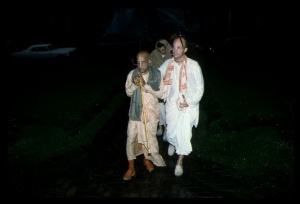CC Madhya 25.94 (1975): Difference between revisions
(Vanibot #0027: CCMirror - Mirror CC's 1996 edition to form a basis for 1975) |
(Vanibot #0020: VersionCompareLinker - added a link to the Version Compare feature) |
||
| Line 2: | Line 2: | ||
<div style="float:left">'''[[Sri Caitanya-caritamrta (1975)|Śrī Caitanya-caritāmṛta (1975)]] - [[CC Madhya (1975)|Madhya-līlā]] - [[CC Madhya 25 (1975)|Chapter 25: How All the Residents of Vārāṇasī Became Vaiṣṇavas]]'''</div> | <div style="float:left">'''[[Sri Caitanya-caritamrta (1975)|Śrī Caitanya-caritāmṛta (1975)]] - [[CC Madhya (1975)|Madhya-līlā]] - [[CC Madhya 25 (1975)|Chapter 25: How All the Residents of Vārāṇasī Became Vaiṣṇavas]]'''</div> | ||
<div style="float:right">[[File:Go-previous.png|link=CC Madhya 25.93 (1975)|Madhya-līlā 25.93]] '''[[CC Madhya 25.93 (1975)|Madhya-līlā 25.93]] - [[CC Madhya 25.95 (1975)|Madhya-līlā 25.95]]''' [[File:Go-next.png|link=CC Madhya 25.95 (1975)|Madhya-līlā 25.95]]</div> | <div style="float:right">[[File:Go-previous.png|link=CC Madhya 25.93 (1975)|Madhya-līlā 25.93]] '''[[CC Madhya 25.93 (1975)|Madhya-līlā 25.93]] - [[CC Madhya 25.95 (1975)|Madhya-līlā 25.95]]''' [[File:Go-next.png|link=CC Madhya 25.95 (1975)|Madhya-līlā 25.95]]</div> | ||
{{CompareVersions|CC|Madhya 25.94|CC 1975|CC 1996}} | |||
{{RandomImage}} | {{RandomImage}} | ||
==== TEXT 94 ==== | ==== TEXT 94 ==== | ||
| Line 25: | Line 24: | ||
<div class="translation"> | <div class="translation"> | ||
"The meaning of the sound vibration oṁkāra is present in the Gāyatrī mantra. The same is elaborately explained in the four ślokas of Śrīmad Bhāgavatam known as catuḥ-ślokī. | |||
</div> | </div> | ||
Latest revision as of 16:47, 27 January 2020
Śrī Caitanya-caritāmṛta (1975) - Madhya-līlā - Chapter 25: How All the Residents of Vārāṇasī Became Vaiṣṇavas

His Divine Grace
A.C. Bhaktivedanta Swami Prabhupada
A.C. Bhaktivedanta Swami Prabhupada
TEXT 94
- praṇavera yei artha, gāyatrīte sei haya
- sei artha catuḥ-ślokīte vivariyā kaya
SYNONYMS
praṇavera—of the sound vibration, oṁkāra; yei—whatever; artha—meaning; gāyatrīte—in the Gāyatrī mantra; sei—that; haya—there is; sei artha—that same meaning; catuḥ-ślokīte—in Śrīmad-Bhāgavatam summarized in four ślokas; vivariyā—describing elaborately; kaya—has said.
TRANSLATION
"The meaning of the sound vibration oṁkāra is present in the Gāyatrī mantra. The same is elaborately explained in the four ślokas of Śrīmad Bhāgavatam known as catuḥ-ślokī.